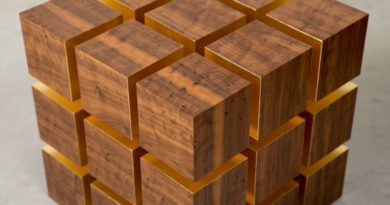Lenticular Lens
Here’s an artist using a little-known technological gem to create something extremely creative and beautiful. Meet Rufus Butler Seder, founder and CEO of Eye Think Inc.
Years ago, a fascination with antique optical toys led Rufus Butler Seder to wonder if he could create motion pictures on a grand scale using no electricity, moving parts or special lighting. After some experiment he developed a 3-pound, 8-inch square, lens-ribbed glass tile that was to form the building block for his dream come true. He called it a Lifetile.
By combining hundreds of Lifetiles, Rufus is able to create large-scale “Movies for the Wall”: optical murals that appear to come to life, move, and change when the observer travels by them. Lifetiles murals contain no moving parts. The motion is in the eye of the beholder.
Since 1990 Rufus has designed, fabricated and installed dozens of Lifetiles work in museums, aquariums, and other public places around the world. The medium is maintenance-free and lends itself to almost any subject or location, outdoors or in. No special lighting is required.
Every Lifetile is hand-crafted from start to finish. To create a Lifetiles mural, Rufus first designs each individual phase of movement by referring to original or archival motion picture footage, filming the subject in motion himself, or by drawing from scratch. Once he has created the final visuals, he combines analog and digital techniques to compress them into “coded images” that he indelibly fuses into each glass tile. When the casual observer strolls by a completed Lifetiles mural , the ribbed tile lenses optically unscramble the coded images “frame by frame,” and the observer’s brain links this rapid succession of images together, creating the illusion of movement.
The process/method he is using is known as a lenticular lens. According to Wiki, this is an array of magnifying lenses that magnifies different images when viewed from different angles. The process has been around for a while and has been used in other art projects (look at the album cover to Tool’s Aenima), but not on this scale. Hail to the Enginart!


